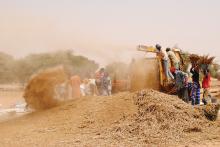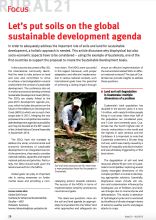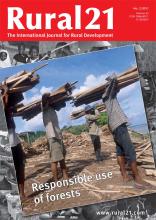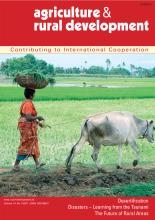/ library resources
Showing items 1 through 9 of 15.In the debate on climate change, it is frequently argued that the number of “climate refugees” is going to grow world-wide. So far, however, only little evidence has been provided of links between climate change, environmental changes and migration.
Not only is biodiversity a valuable asset, but it also represents a possible source of income for rural communities. The article shows how Peru is making use of this potential in the context of the BioTrade concept to sustain both, rural livelihood and conservation of native biodiversity.
Rangelands cover 30 per cent of the global land surface. They support a considerable share of the global ruminant value chains, are habitat for a high plant and animal diversity and have various ecological, economic and social functions.
In order to adequately address the important role of soils and land for sustainable development, a holistic approach is needed.
Zimbabwe used to be well-known for its high-quality meat exports. The sector was hard hit by the economic crisis that set in during the 1990s and coincided with the impact of a failed land reform and recurrent drought.
Every year, 13 million hectares of forest are lost worldwide; that is an area the size of Austria and Switzerland combined. 90 percent of this deforestation involves tropical forests.
The tsunami disaster on 26 December 2004 claimed more than 200,000 lives.
2005 was a year of natural disasters.The impacts of the tsunami in the Indian Ocean, Hurricanes Katrina and Stan, and the Pakistan earthquake prompted calls for better disaster prevention and preparedness systems.
People-centred early warning systems empower communities to prepare for and confront the power of natural hazards.
Pagination
Land Library Search
Through our robust search engine, you can search for any item of the over 73,000 highly curated resources in the Land Library.
If you would like to find an overview of what is possible, feel free to peruse the Search Guide.





